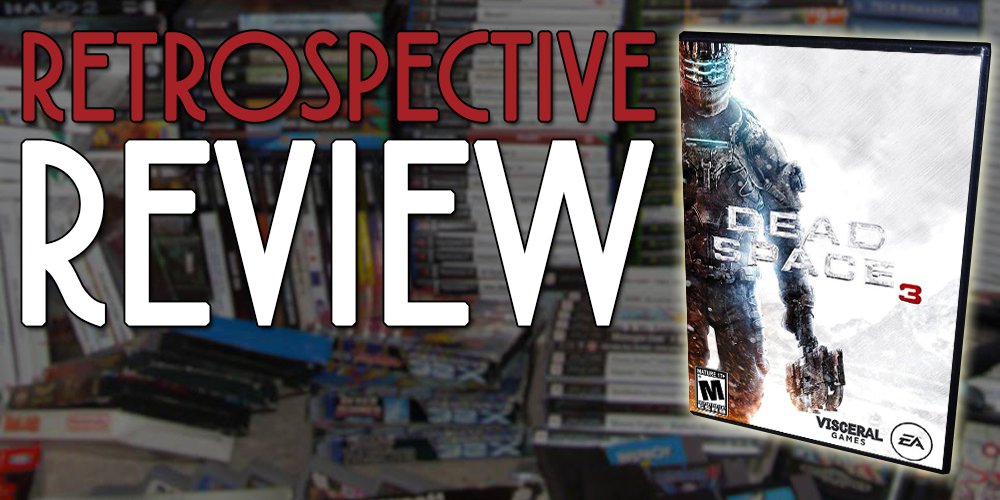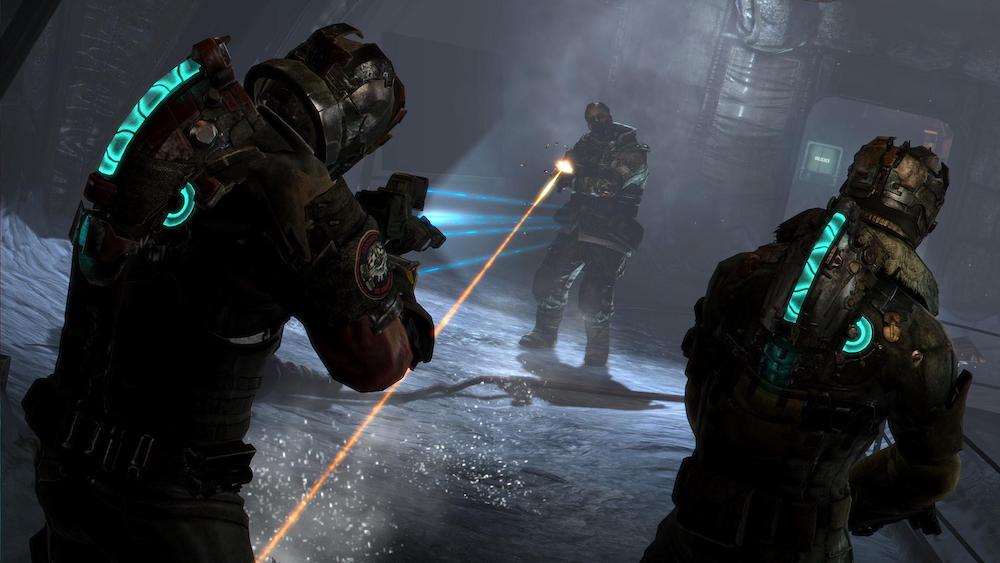
2013 was an interesting year for gaming, and looking back it’s easy to see why the industry is in the state it’s in today. AAA titles were being rushed out the door to meet annual release schedules, sequels were being pumped out for quick cash-grabs, and most prominent of all was the mainstream introduction of microtransactions into the market. Playing Dead Space 3 today, it’s obvious how much of a stranglehold EA had over the project during its development, and it’s because of this Visceral’s vision for the series wouldn’t come to fruition. I still remember the uproar when the game first released in early 2013, and having played it for myself now, I see why it failed to live up to expectations.

If Dead Space to Dead Space 2 was a big jump in narrative complexity, the increase in 3 is massive. The game kicks right off with a flashback to the year 2314 on an ice-ridden planet called Tau Volantis. A plot device known as the Codex is introduced but is quickly cleaned of anything it holds after a rather violent encounter between the character you’re playing and his commander. Fast forward 200 years to the current day, and we learn that Isaac and Ellie had been in a relationship that ended before the events of Dead Space 3 before Isaac is rudely interrupted by some angry soldiers who deem him a threat due to his expertise in Marker Destruction.
He’s effectively blackmailed into helping them find Ellie, whose last transmission came from Tau Volantis, and a Marker is activated within the colony Isaac is living in, starting another Necromorph outbreak. From here the story gets into all kinds of weird stuff, for better and worse. The idea behind the Markers and Necromorphs introduced in Dead Space 3 is interesting, but that’s about it. The only characters that kept me engaged were Isaac and Ellie, and I genuinely cared about them and their relationship, but the introduction of the playable Sergeant John Carver was a fruitless one. It seems like the third game wanted to up the ante in every respect, but it doesn’t always work in its favour. I would love to say it’s a fitting send off to the trilogy, but a post credit scene takes away all sense of closure and satisfaction, despite it ending in a way that felt fitting for the emotional trauma Isaac went through over the three games.

Dead Space 3 is the biggest departure for the series yet due to one significant change, the ability to play through the entire game cooperatively. One of the title’s key selling points is arguably its biggest flaw. Horror and co-op do not gel well together. It’s hard to be scared or immersed in the atmosphere when you know you have another player beside you. This means that if you play the game the way it was intended to, you lose part of what made Dead Space brilliant in the first place. If you opt to play solo, you’re always reminded that this game was designed for two people through its puzzles, workstations, and optional side quests that require cooperative play. They’re two parts that are constantly at war with each other, creating a tonal dissonance in what should be a tense and atmospheric experience.
Dead Space 3 is also a more action-orientated game, and the experience suffers because of this. What little tension and world building there is in the environments you explore almost always climax with some big explosive set piece. Large amounts of enemies swarm you in the latter half of the game, simplifying combat to a standard third-person shooter. You can still aim to take off limbs for extra damage, but it’s so hectic at some points that it’s hard to take the time to aim properly. It’s a perfectly playable third-person shooter, and Isaac retains the same abilities from previous titles, but it lacks the tension demanding precision that the series is so well-known for.

The other fundamental issue with gameplay is that it doesn’t feel like survival horror. Instead of finding new and upgradeable weapons in the environments you explore, and Isaac can now craft weapons using different parts. You can create some crazy stuff with this system, and see what kind of ludicrous six-barrelled shotgun you come up with next feels fresh and encourages experimentation, but it has its caveats. Crafting resources are limited early on, but the same can’t be said for health and ammunition. I found that I had a surplus of health packs and ammo by the halfway point on the hardest difficulty. It takes away from the core of survival horror because frankly, finding parts you can craft with isn’t as satisfying as stumbling on a desperately needed health item.
Dead Space 3 was the first significant inclusion of microtransactions in mainstream triple-A gaming. You can buy resources and upgrades for the scavenger bot with real money at any point in the game. Five years later, these microtransactions are still purchasable on Origin, but thankfully they aren’t necessary. Crafting resources are still plentiful, but it’s interesting to see where the trend started to begin with.
My experience with Dead Space 3 was also a technical mess. The game looks great for a 2013 title, and the snow effects are some of the best for its time, but that’s where the positives stopped. I would often see heavy drops in frame-rates when a lot is on screen and physics bugs. These bugs came up so frequently that it affected my experience quite a bit. No matter how I fiddled with my settings, I couldn’t find a way to resolve these issues.

I was hoping my experience with Dead Space 3 would be, at the very least, a good one. Ultimately, however, it’s a flawed sequel that rests on the laurels of its predecessors and reeks of publisher meddling. It does some interesting things with the main characters and crafting ideas, but these ideas aren’t enough to save the game from mediocrity. It’s a painfully average survival horror title that doesn’t know what it wants to be. I can’t recommend Dead Space 3 to you unless you want to finish it for the sake of what little closure you get.











